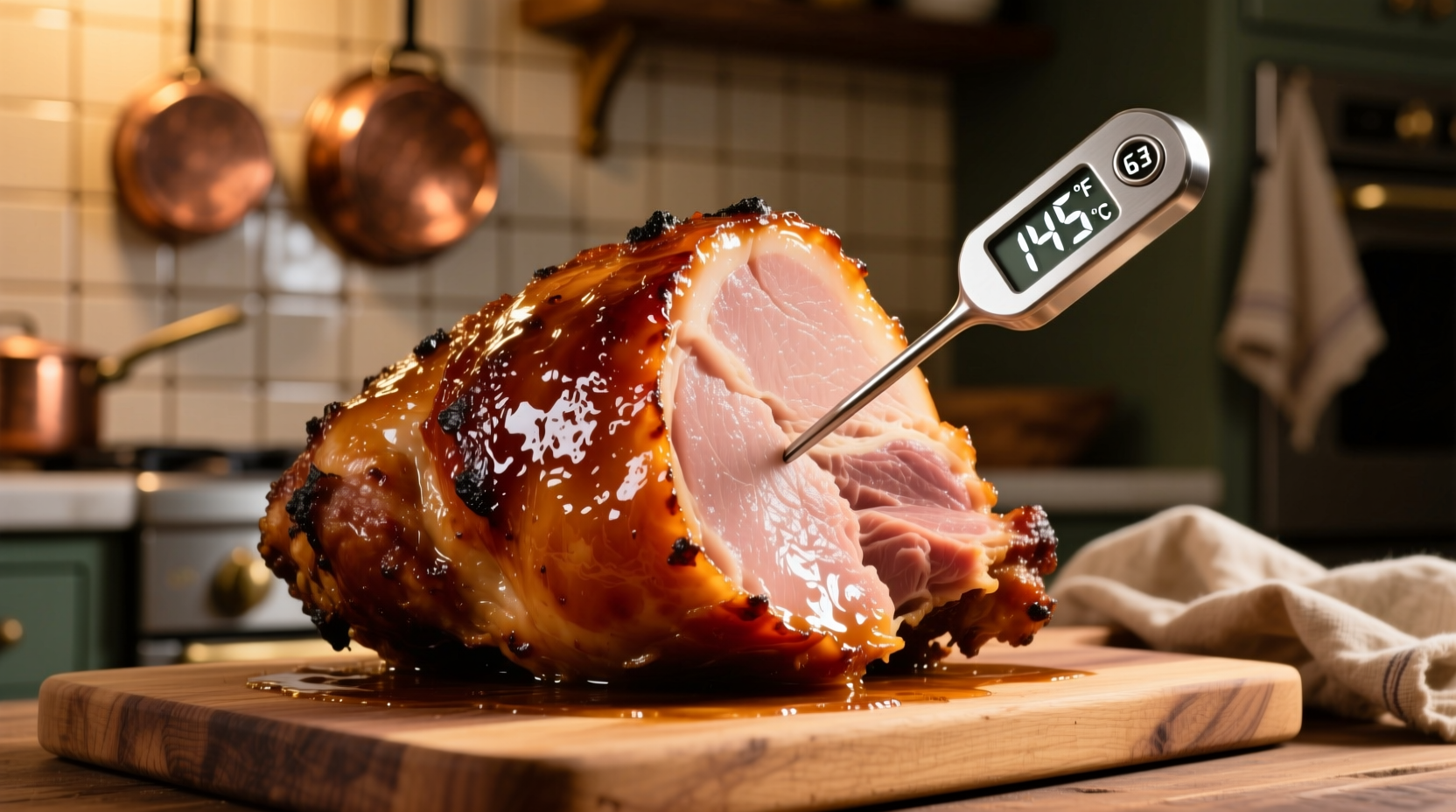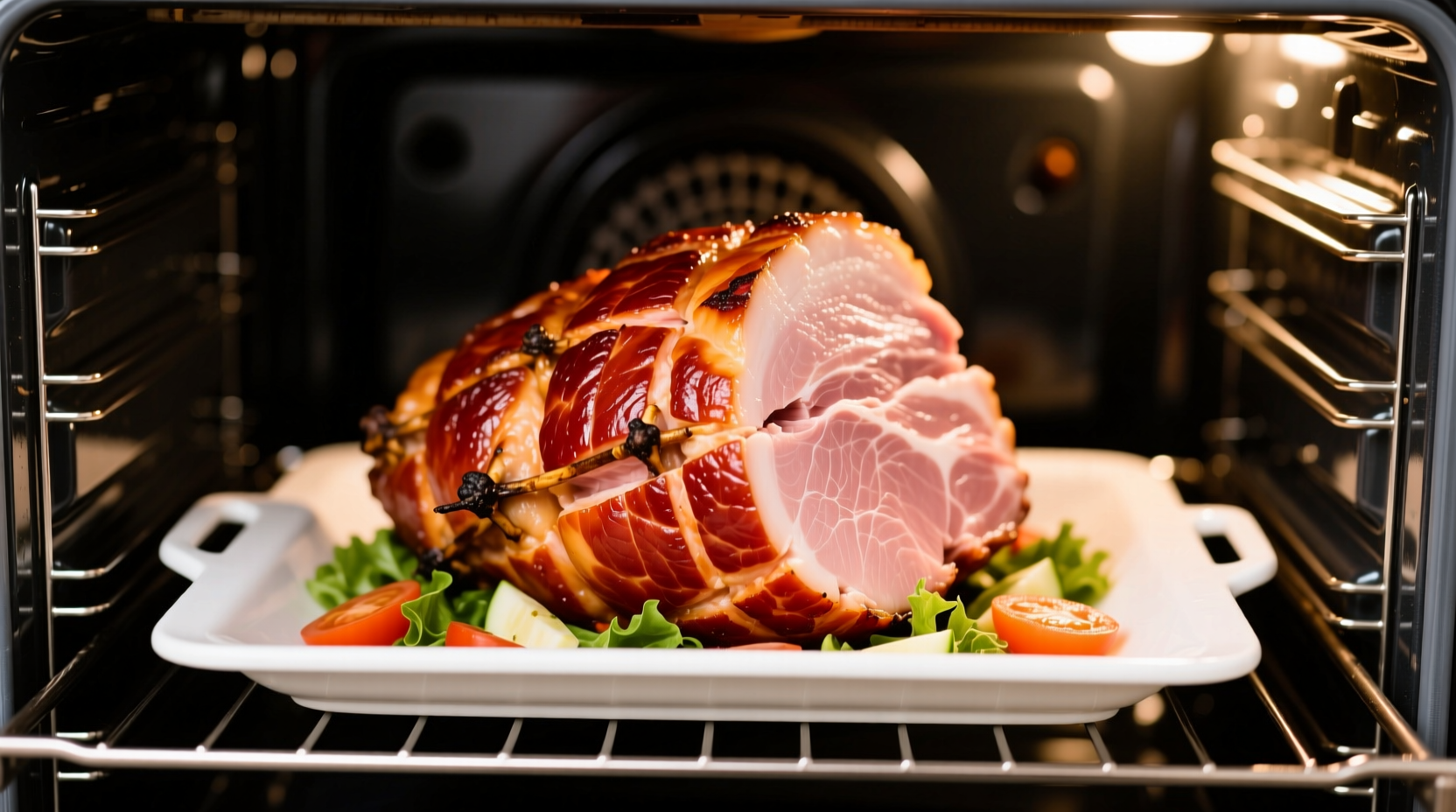Nothing says celebration like a perfectly cooked ham, but getting the timing right can make or break your holiday centerpiece. Whether you're preparing your first ham or refining your technique, understanding the precise cooking requirements ensures juicy, flavorful results every time. This comprehensive guide eliminates guesswork with science-backed timing, temperature guidelines, and professional techniques used by culinary experts.
Understanding Your Ham Type Before Cooking
Not all hams cook the same. The first critical step is identifying your ham variety, as this determines both preparation and cooking time. Most supermarket hams fall into two categories:
- Pre-cooked/Ready-to-Eat Hams (about 90% of retail hams) - These have been fully cooked through baking, curing, or smoking. They only need reheating to serving temperature.
- Raw/Fresh Hams - Require full cooking from raw state. Less common in supermarkets but popular among specialty butchers.
Check your packaging for phrases like "cook thoroughly" (raw) or "ready to eat" (pre-cooked). When in doubt, assume it's pre-cooked unless specifically labeled otherwise.
| Ham Type | Internal Temp Target | Cooking Time per Pound | Special Considerations |
|---|---|---|---|
| Spiral-cut (pre-cooked) | 140°F (60°C) | 10-14 minutes | Cover with foil to prevent drying |
| Whole bone-in (pre-cooked) | 140°F (60°C) | 15-18 minutes | Place cut-side down initially |
| Raw/cured ham | 145°F (63°C) | 20-25 minutes | Requires full cooking process |
Essential Preparation Steps for Perfect Results
Proper preparation significantly impacts your final outcome. Follow these professional steps before oven placement:
- Bring to room temperature - Remove ham from refrigerator 1-2 hours before cooking. This promotes even heating.
- Score the surface - Make shallow diagonal cuts 1/4 inch deep across the fat cap in a diamond pattern. This helps render fat and allows glaze penetration.
- Prepare your pan - Use a roasting pan with a rack. Add 1-2 cups of liquid (apple juice, broth, or water) to the bottom to maintain moisture.
- Apply initial glaze - Brush on 1/3 of your glaze before cooking begins to create a flavorful base layer.

Optimal Cooking Process: Time, Temperature & Technique
While time-per-pound provides a baseline, oven temperature and cooking method significantly affect results. The USDA Food Safety and Inspection Service recommends cooking pre-cooked hams to 140°F internal temperature for safety without overcooking.
For best results:
- Set oven to 325°F (163°C) - lower temperatures prevent exterior drying
- Cover with foil for first 60% of cooking time, then uncover for browning
- Baste every 20-30 minutes with pan juices or additional glaze
- Rotate pan halfway through for even cooking in non-convection ovens
Professional chefs at the Culinary Institute of America emphasize that relying solely on time calculations risks dryness. Always verify with a digital meat thermometer inserted into the thickest part, avoiding bone contact.
Checking for Doneness: Beyond the Timer
The moment of truth arrives when your calculated cooking time ends. Don't rely solely on the clock:
- Insert thermometer into multiple spots, especially near the bone
- Pre-cooked hams should reach 140°F (60°C), raw hams 145°F (63°C)
- Meat should feel firm but spring back when pressed
- Juices should run clear, not pink
Remember that carryover cooking will raise the internal temperature 5-10 degrees after removal from oven. Remove ham 5 degrees below target temperature.
Resting and Serving: The Critical Final Step
Rushing to carve creates dry ham. Proper resting allows juices to redistribute:
- Cover loosely with foil and rest 15-20 minutes before slicing
- For spiral-cut hams, rest 10-15 minutes to prevent juice loss
- Serve at 130-140°F for optimal flavor and texture
When carving, slice perpendicular to the bone in 1/4-inch thick slices. For spiral-cut hams, simply follow the existing cuts.
Troubleshooting Common Ham Cooking Issues
Even with careful planning, challenges arise. Here's how to handle them:
- Dry ham - Baste more frequently next time; consider lowering oven temperature to 300°F for larger hams
- Undercooked center - Return to oven, covered, checking temperature every 10 minutes
- Excessive browning - Reduce oven temperature and cover with additional foil
- Glaze burning - Apply glaze during last 20-30 minutes of cooking
Food safety experts at the USDA note that ham left in the "danger zone" (40-140°F) for over 2 hours becomes unsafe. Always maintain proper temperatures during the cooking process.
Advanced Tips from Professional Kitchens
Elevate your ham game with these chef-recommended techniques:
- Inject brine solution (1/4 cup salt + 1/4 cup sugar per 4 cups water) for extra moisture
- Place whole cloves in diamond pattern intersections for aromatic depth
- Use pineapple juice in your glaze for natural caramelization
- Cook bone-in hams with the flat side down for first half of cooking time
Remember that convection ovens typically require reducing cooking time by 25% or lowering temperature by 25°F compared to conventional ovens.
Frequently Asked Questions
Can I cook ham at 350°F instead of 325°F?
Yes, but reduce cooking time to 12-15 minutes per pound for pre-cooked hams. Higher temperatures increase drying risk, so check internal temperature 15 minutes early and cover with foil if browning too quickly.
How do I prevent my ham from drying out?
Cover with foil for first 60% of cooking, add liquid to the pan, baste every 20-30 minutes, and remove from oven at 5 degrees below target temperature. Spiral-cut hams particularly benefit from being placed cut-side down initially with extra glaze in the bottom of the pan.
Should I glaze my ham before or during cooking?
Apply initial glaze before cooking for flavor base, then add additional glaze during the last 30-60 minutes of cooking. Sugar-based glazes burn easily, so avoid applying too early. Professional chefs recommend three glaze applications: start, middle, and final 30 minutes.
How long can cooked ham stay in the oven after reaching temperature?
Maximum 30 minutes beyond target temperature. Extended warming dries out ham. If meal timing requires delay, remove ham, cover tightly with foil, and store in a 140°F warming drawer or insulated container. Never hold between 40-140°F for more than 2 hours for food safety.
Can I cook frozen ham without thawing first?
Yes, but increase cooking time by approximately 50%. A frozen 8-pound ham would need about 20-24 minutes per pound instead of 15-18. Check temperature frequently during the last hour as cooking rate changes when transitioning from frozen to thawed state.











 浙公网安备
33010002000092号
浙公网安备
33010002000092号 浙B2-20120091-4
浙B2-20120091-4